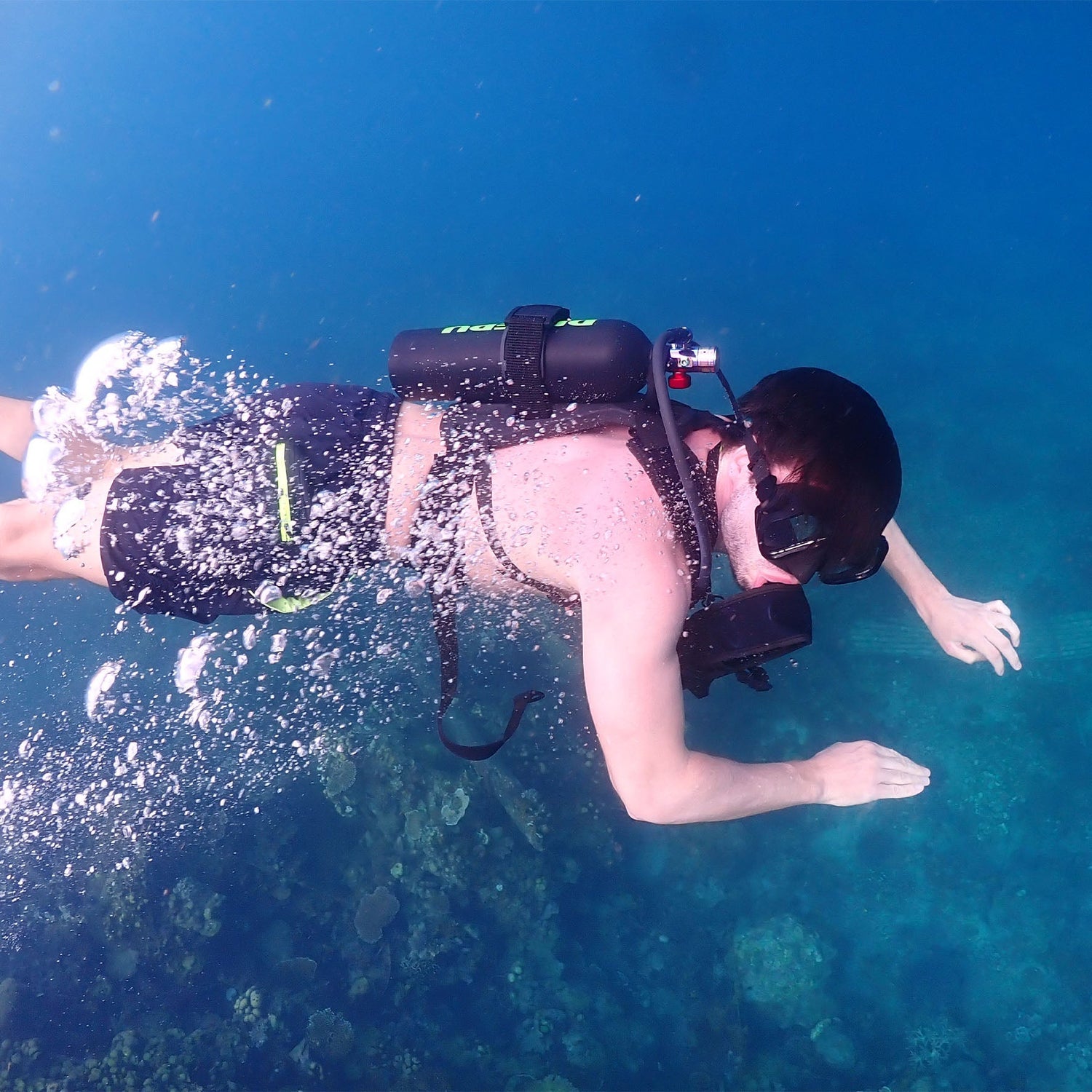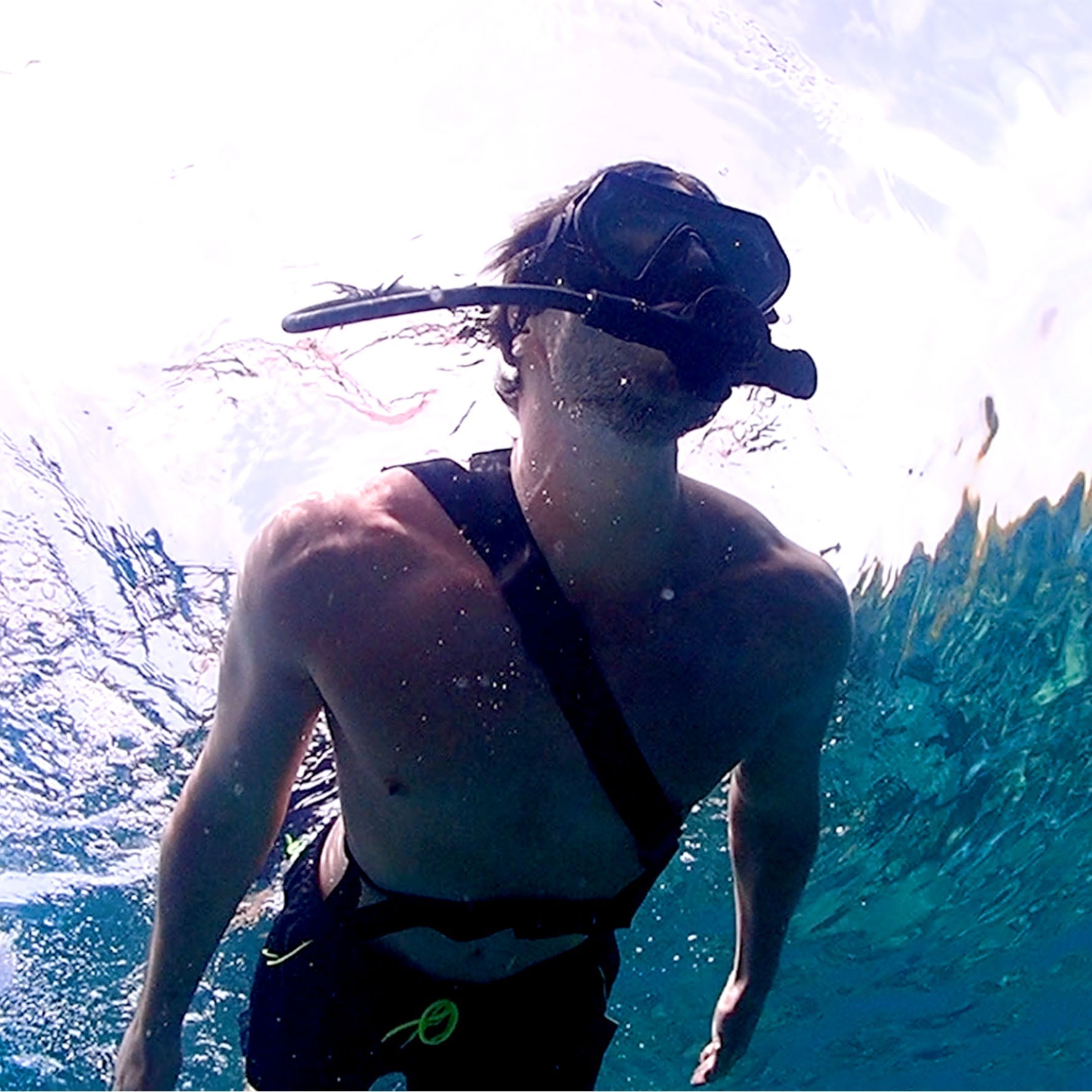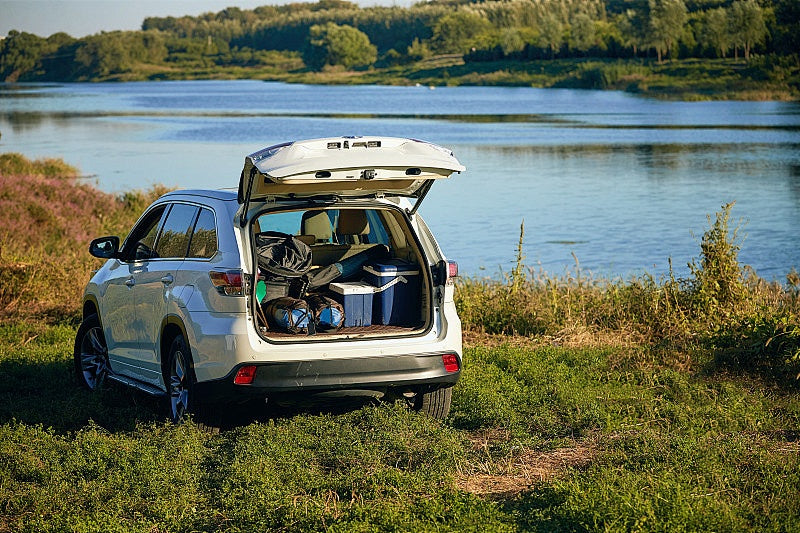Properly stored, compressed air can remain safe for 6–12 months, depending on conditions. Moisture, temperature, and tank maintenance play key roles—a corroded valve or contaminated air can make breathing risky. To check freshness, crack the valve slightly and smell for odd odors (like oil or mildew). Storing tanks upright in a cool, dry place with 100–200 psi left inside helps prevent moisture buildup. For safety, get tanks professionally inspected annually and refill if unused beyond a year.
What’s Inside Your Tank
The air in your scuba tank isn’t just "regular air"—it’s compressed to 200-300 bar (2900-4350 psi), filtered to remove impurities, and stored in an aluminum or steel cylinder. A typical tank holds 80 cubic feet (11.1 liters at 200 bar) of breathing gas, which lasts about 60 minutes for an average diver at 10 meters (33 feet). The exact duration depends on breathing rate (12-20 breaths per minute), depth (consumption doubles every 10 meters), and tank size (common sizes: 12L, 15L, 18L).
Air quality degrades if stored improperly—moisture above 67% relative humidity can cause corrosion, and hydrocarbon contamination over 0.5 mg/m³ makes air unsafe. To prevent issues, tanks should be stored at 10-25°C (50-77°F) with 50-100 psi residual pressure to keep seals tight. Annual inspections catch 90% of potential leaks or corrosion before they become hazardous.
1. Composition: What You’re Actually Breathing
78% nitrogen, 21% oxygen, 1% trace gases (argon, CO₂) – same as surface air, just 3-5x denser due to compression.
Oxygen purity must stay above 19.5%—below that, hypoxia risk increases.
CO₂ levels under 500 ppm (0.05%) are safe; higher concentrations cause headaches or dizziness.
2. Pressure & Volume: Why Tank Size Matters
A 12L tank at 200 bar holds 2400L of air—enough for 45-90 min depending on depth.
At 30 meters (100 ft), air consumption triples vs. surface breathing.
Steel tanks (6-18L) weigh 25-35% more than aluminum but last 20-30 years with proper care.
3. Contaminants: What Ruins Good Air
Moisture > 24 mg/m³ accelerates corrosion—visible as white powder (aluminum oxide) inside valves.
Oil residues > 0.1 mg/m³ from compressors can cause toxic fumes when heated under pressure.
Test every 6 months if unused; 99% of failures come from neglect, not material defects.
4. Storage Tips to Keep Air Safe
Store upright to prevent valve damage (lateral force > 50N can warp seals).
Keep 50-100 psi (3.5-7 bar) residual pressure—empty tanks invite humidity.
Inspect O-rings every 2 years—a 0.5mm crack can cause slow leaks (1-2 bar loss per month).
5. When to Refill or Retire a Tank
Refill if unused >1 year—even sealed air loses <1% O₂ per year but moisture accumulates.
Hydrostatic testing every 5 years checks for >5% expansion (fail rate: ~2% of tanks).
Retire tanks with >10% wall thinning or visible pitting deeper than 0.3mm.
Key Takeaway:
Your tank’s air stays safe 6-12 months if stored correctly, but depth, breathing rate, and maintenance dictate real-world performance. Test often, store smart, and never gamble on old air.

How Long Does Air Last
Storage Temperature: Air stays stable longer when stored at 10-25°C (50-77°F). Above 30°C (86°F), oxidation rates double, reducing safe storage time from 12 months to 6 months.
Tank Material: Steel tanks corrode 0.05mm/year in saltwater environments, while aluminum forms a 0.02mm oxide layer that slows degradation.
Breathing Rate: An average diver consumes 20-30L of air per minute at 10m (33ft), cutting dive time by 50% at 30m (100ft) due to 3x higher consumption.
Properly maintained, 80% of tanks retain safe air for 1 year, but neglect drops this to 3-6 months.
1. Storage Conditions
Temperature & Humidity
Ideal range: 10-25°C (50-77°F)
Max safe humidity: 50% RH
Risk threshold: 67% RH increases corrosion 200%
Pressure Retention
Minimum safe residual pressure: 50 psi (3.4 bar)
Below this threshold: Seals fail within 3 months
UV Exposure
Direct sunlight impact: +5-8°C (9-14°F) internal temp rise
O-ring degradation: 30% faster
2. Tank Specifications
Material Comparison
| Feature | Steel Tanks | Aluminum Tanks |
|---|---|---|
| Lifespan | 20-30 years | 15-20 years |
| Corrosion Rate | 0.05mm/year | 0.02mm/year |
| Wall Thickness | Standard | 10% thicker |
| Failure Points | Pitting >0.3mm | Neck cracks |
Maintenance Requirements
Annual inspection detects:
85% of potential leaks
90% of corrosion issues
Valve leak test: 5 bar/month loss from 0.1mm gap
3. Depth & Consumption
Breathing Rates
Resting: 12L/min
Stressed: 40L/min
Average dive: 20-30L/min at 10m
Depth Multipliers
| Depth | Air Consumption Rate | Dive Time Reduction |
|---|---|---|
| Surface | 1x | Baseline |
| 10m (33ft) | 2x | 50% shorter |
| 20m (66ft) | 3x | 67% shorter |
| 30m (100ft) | 4x | 75% shorter |
4. Contamination Risks
Common Contaminants
CO₂
Safe level: <500 ppm
Stale air (>1 year): Exceeds 500 ppm
Oil Residues
Danger threshold: >0.5 mg/m³
Flash point: 200°C (392°F)
Testing Protocol
Frequency: Every 6 months for unused tanks
Detection rate: 90% of preventable issues
5. Maintenance Schedule
Critical Timelines
Monthly: Visual corrosion check
Every 6 months: Air quality test
Annual: Full internal inspection
Every 5 years: Hydrostatic test
Replacement Criteria
Retire tanks with:
Pitting >0.3mm deep
Wall thinning >10%
Failed hydrostatic test (>5% expansion)
Key Takeaway:
Air longevity isn't fixed - proper storage, regular checks, and smart usage make all the difference. Follow the 6-month test rule and never dive with untested air older than 1 year.
Checking Air Quality
Odor Test: Contaminated air often smells like oil (≥0.5 mg/m³) or mildew (humidity >67% RH)—both indicate potential hazards.
Taste Check: A metallic or sour taste suggests CO₂ levels above 500 ppm, which can cause headaches within 15-30 minutes of diving.
Pressure Drop: A tank losing >10 bar (145 psi) per month likely has a valve leak (90% of cases) or internal corrosion.
Lab tests show 1 in 50 tanks fail air purity standards after 6 months of storage, rising to 1 in 20 after 1 year. For safety, test every 6 months and before any dive after 3+ months of inactivity.
1. Immediate Warning Signs
Smell & Taste Indicators
| Contaminant | Threshold | Risk |
|---|---|---|
| Oil/Machine Odor | ≥0.5 mg/m³ | Toxic fumes at depth |
| Musty Smell | Humidity >67% RH | Corrosion accelerator |
| Sour/Metallic Taste | CO₂ >500 ppm | Impaired judgment |
Pressure Loss Rates
Normal: <5 bar/month (72 psi)
Warning: 5-10 bar/month (72-145 psi) → Inspect O-rings
Critical: >10 bar/month (145 psi) → Professional service required
2. Tools for Testing
Consumer-Grade Checks
Oxygen Analyzer: Measures O₂ % (<19.5% = unsafe)
Accuracy: ±0.5%
Cost: 100-300
CO₂ Detector Tubes: Detect >0.05% CO₂
Response Time: 2 minutes
Single-use cost: 5-10
Professional Lab Tests
Frequency: Every 6-12 months
Tests For:
Hydrocarbons (<0.1 mg/m³)
CO (<10 ppm)
Particulates (<1 mg/m³)
Cost: 30-50 per test
3. When to Reject Air
Absolute Dealbreakers
Visible Moisture: Droplets or fog inside tank = immediate condemn
Pressure Anomalies:
Rapid drop (>20 bar/month)
No pressure after storage (indicates seal failure)
Test Results Beyond Limits:
O₂ <19.5%
CO >10 ppm
Oil >0.5 mg/m³
4. Maintenance Routines
Preventative Schedule
| Task | Frequency | Key Metric |
|---|---|---|
| Visual Inspection | Monthly | Corrosion depth ≤0.3mm |
| Valve Check | Quarterly | Leak rate ≤5 bar/month |
| Professional Service | Annually | Pass all 6 lab tests |
Cost-Benefit
50/year in testing prevents 500+ in tank repairs or $5,000+ medical bills from bad air.
5. Real-World Data
Tank Failure Statistics
85% of contaminated tanks show visible signs (odor, moisture)
10% fail silently (detectable only via lab tests)
5% fail from sudden events (valve cracks, impact damage)
Diver Experience Reports
72% detect problems via smell/taste first
28% rely on pressure gauges or tests
Key Takeaway:
Safe air has no odor, stable pressure, and tests within limits. Invest 5 minutes monthly for visual/odor checks, $50 yearly for pro tests, and zero tolerance for warning signs. Your life depends on 200 bar of clean gas—don’t gamble with it.
Best Ways to Store Your Tank for Fresh Air
Residual Pressure: Tanks stored with 50-100 psi (3.4-6.9 bar) retain 90% of air purity for 12+ months, while empty tanks develop moisture issues in 3-6 months.
Temperature Control: At >30°C (86°F), O-ring degradation accelerates by 40%, and steel tanks corrode 0.1mm/year vs. 0.05mm/year in ideal conditions (10-25°C / 50-77°F).
Humidity: Levels >60% RH triple corrosion rates. A 20 hygrometer prevents this—moisture damage costs 200+ per tank to repair.
Data shows 75% of tank failures stem from poor storage. Follow these measurable protocols to avoid becoming a statistic.
1. Positioning & Orientation
Upright vs. Horizontal
Upright Storage:
Reduces valve stress by 50%
Prevents moisture pooling (risk drops 80%)
Horizontal Risks:
>50N lateral force warps valves over 6 months
30% higher corrosion at contact points
Rack Specifications
Padding Thickness: ≥5mm rubber
Spacing: ≥10cm between tanks for airflow
2. Environmental Controls
Ideal Storage Conditions
| Parameter | Safe Range | Risk Threshold |
|---|---|---|
| Temperature | 10-25°C (50-77°F) | >30°C (86°F) |
| Humidity | <50% RH | >60% RH |
| Light | Indirect | Direct UV (degrades O-rings 30% faster) |
Cost-Effective Solutions
$50 dehumidifier maintains 40-50% RH in a 10m² room
Reflective covers (15-30) reduce internal temp by 5°C (9°F)
3. Pressure Management
Residual Pressure Guidelines
Minimum: 50 psi (3.4 bar) – prevents humidity ingress
Optimal: 100 psi (6.9 bar) – extends seal life 2x
Never: 0 psi – invites 100% humidity absorption
Monitoring Tools
Analog gauges: Check monthly (±5% accuracy)
Digital sensors: 75-150, log trends (±1% accuracy)
4. Maintenance Schedule
Routine Tasks
| Task | Frequency | Time/Cost | Key Metric |
|---|---|---|---|
| Pressure Check | Monthly | 2 minutes | Drop <5 psi/month |
| Valve Exercise | Quarterly | 5 minutes | Turn 180° 3x |
| Full Inspection | Annually | 50-100 | Pass 6-point test |
Failure Prevention
O-ring replacement: Every 2 years ($5 per ring)
Hydrostatic test: Every 5 years (40-80)
5. Cost-Benefit Analysis
Storage Investment vs. Risk
| Item | Upfront Cost | Long-Term Savings |
|---|---|---|
| Hygrometer | $20 | Prevents $200+ corrosion repairs |
| Dehumidifier | $50 | Adds 5+ years to tank life |
| Padded Rack | $100 | Cuts valve repairs by 70% |
Neglect Consequences
Corroded tank: 300 salvage vs. 800 replacement
Failed hydro: 100% loss of tank value
Key Takeaway:
Spend 100/year on proper storage or gamble 1000+ on replacements. Keep tanks upright, pressurized, and climate-controlled—your air (and wallet) will thank you.

When to Refill or Test Your Tank Air
Air Age: Even perfectly stored air degrades over time. After 6 months, oxygen levels can drop by 1-2%, and CO₂ may creep above 500 ppm—enough to cause headaches at depth.
Pressure Loss: A healthy tank loses <5 psi (0.3 bar) per month. If you notice >10 psi (0.7 bar) monthly loss, there’s a 90% chance of a failing O-ring or valve leak.
Usage Patterns: Divers who log 20+ dives per year should test air every 6 months, while occasional divers (<10 dives/year) can stretch to 12 months—but never longer.
Industry data shows 1 in 30 tanks fail air purity tests after 1 year of storage, with repair costs averaging 150-400. Testing early saves money—and lives.
1. Time-Based Refill Rules
Fixed Deadlines
6 Months: Mandatory test if unused. Oxygen depletion reaches 1.5%, and moisture absorption risks rise 50%.
12 Months: Absolute max for stored air. Beyond this, CO₂ contamination probability jumps to 25%.
After Every Dive Trip: Refill if <500 psi (34 bar) remains—topping off prevents humidity ingress.
Material Factors
Aluminum Tanks: More prone to internal moisture. Refill twice as often in humid climates.
Steel Tanks: Hold pressure better but corrode faster if stored wet. Check every 5 months near saltwater.
2. Performance-Based Warning Signs
Breathing Symptoms
Metallic taste = CO₂ >600 ppm (test immediately).
Shortness of breath at shallow depths = possible O₂ <19% (life-threatening below 18m/60ft).
Unusual fatigue post-dive = often high CO or oil residues (lab test required).
Equipment Red Flags
Regulator free-flow = possible contaminant buildup in valves.
Gauge fluctuations = >5 psi variance signals air stability issues.
Moisture spray when purging = internal humidity >70% RH (corrosion imminent).
3. Testing Methods & Costs
DIY Checks
Smell Test: Free, detects oil (≥0.5 mg/m³) or mildew instantly.
O₂ Analyzer: 100-300 device, accuracy ±0.5%. Use every 3 months if storing long-term.
Burst Disk Inspection: $10 test kits verify <0.1% CO—critical for safety.
Professional Services
Full Air Analysis: 50-80, checks O₂, CO₂, CO, hydrocarbons, moisture.
Hydrostatic Testing: 40-100 every 5 years, detects >5% tank expansion.
VIP (Visual Inspection): 20-50 annually, finds 90% of corrosion issues.
4. Cost of Neglect vs. Proactive Care
Financial Impact
Testing Budget: $100/year covers all mandatory checks.
Repair Costs:
Valve rebuild: 80-200 (preventable with $5 O-rings).
Tank lining repair: $250+ (caused by >60% RH storage).
Medical bills: $5,000+ for CO poisoning from bad air.
Longevity Stats
Tanks tested annually last 20-30 years.
Neglected tanks average 8-12 years before failure.
5. Real-World Decision Guide
When to Refill
Before any dive if tank was stored >3 months.
After 50% pressure loss (e.g., from 3000 psi to 1500 psi).
Immediately if odd smells/tastes emerge.
When to Test
6-month intervals for inactive tanks.
Every 30 dives for frequent divers.
After any symptom (fatigue, headaches, bad taste).
When to Retire
Failed hydrotest (>5% expansion).
Visible pits >0.3mm deep.
Persistent leaks (>10 psi/month loss after repairs).
Key Takeaway:
Test every 6 months, refill before storage, and never breathe questionable air. Spending 0.50 per dive on maintenance beats 500 emergencies. Your tank’s lifespan—and your own—depends on proactive care, not luck.




Leave a comment
All comments are moderated before being published.
Este site está protegido pela Política de privacidade da hCaptcha e da hCaptcha e aplicam-se os Termos de serviço das mesmas.